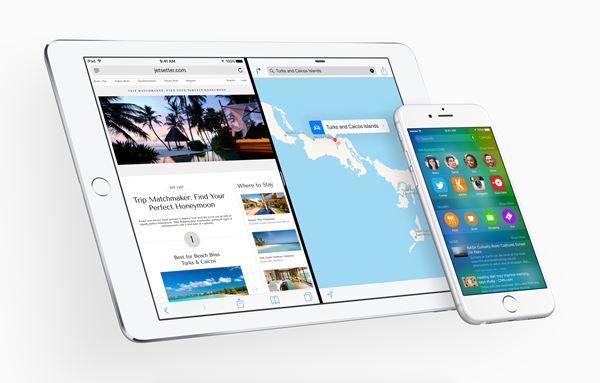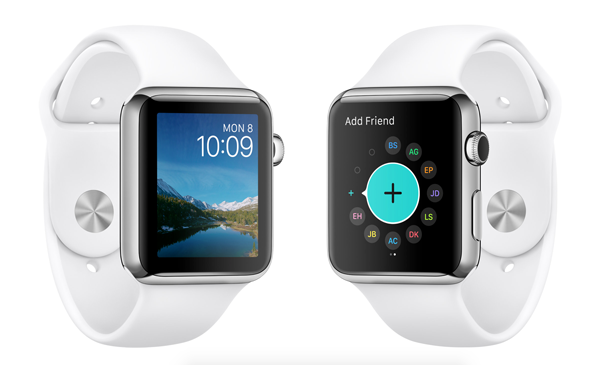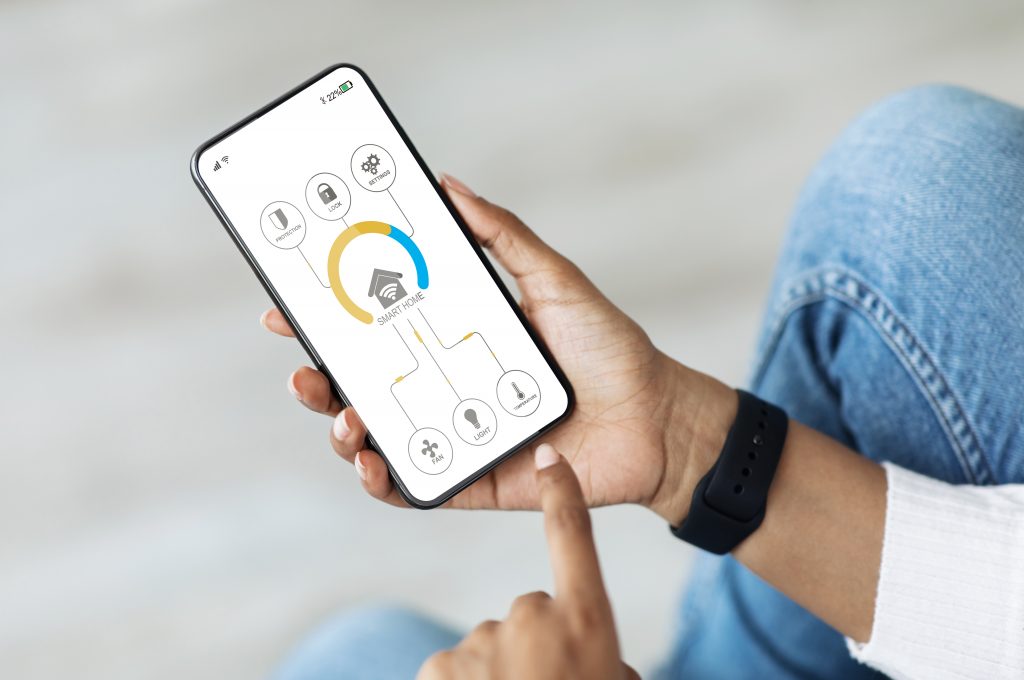Today at WWDC, Apple introduced the future of iOS, watchOS, and OS X. The keynote was several hours long and full of exciting new information such as Apple’s attempt to retake the music industry to a myriad of new uniformity updates across all 3 OSs. At times, the number of changes to apps, operating systems, and tools was almost overwhelming. We got past the noise with iOS developers Jack Bailey and Drew Pitchford. Here they have distilled out the basics on the particular changes and improvements that developers and customers alike should adopt.
iOS 9
Siri Has What You Need
Today during WWDC, Apple released a flurry of new applications and features for their latest and greatest mobile operating system, iOS 9. While there are some major new introductions, the primary focus of iOS 9 during the WWDC keynote was Siri. On top of touting the usual statistics of improved performance and usage, Apple also talked about the new features the virtual assistant will offer. As we learned today Siri makes a great assistant, but she can also be proactive. These new proactive features include inferring unknown phone numbers on screen, providing reservations based on conversations on the fly, or even playing the right music based on your current activities. Topping all of it off is a new and improved UI.
Most importantly for developers and applications, is a new API called Core Spotlight that will plug into Siri’s search abilities. Core Spotlight will provide a way for users to quickly search application content on an entire device without opening the application. The results offer application deep linking which allow users to quickly open applications based on search results. In essence, increasing Siri’s availability to access more of your app’s important information will allow it to show up more often in search results. All apps should be updated to leverage this powerful ability so that they can gain more visibility, therefore increasing app usage.
 Image credit: Apple
Image credit: Apple
Multitasking Redefined
Good news everybody, your iPad just became more powerful as well as having the ability to be your daily workhorse. A number of improvements were revealed for iOS 9 during WWDC 2015 including true multitasking. Apple’s demo included a number of scenarios like viewing/responding to messages on an overlay of your current app, running two apps at the same time, and allowing for the resizing of windows to help the power user in all of us. With the advent of this new powerful ability, developers will be looking to make their apps run in a variety of screen sizes beyond just portrait and landscape. With the rise of Apple’s Auto Layout, it’s vital that your apps are developed to take advantage of this new ability by resizing for any number of screen sizes. By empowering users to run your app on all different screen sizes, your app will be able to run seamlessly with Multitasking introduced by iOS 9.
Games, Games, and More Games
Last year at WWDC, Apple introduced a host of new frameworks to help developers quickly develop new games including SpriteKit and Metal. This year, they are taking it a step further by optimizing Metal, and adding new frameworks like GameplayKit and Model I/O. These new frameworks optimize development to run more efficiently and closer to hardware than ever before. Additionally, the new GameplayKit introduces quick and easy to use elements for game design and development such as pathing AI, randomization kits, and rule systems for building out game logic better than before. Building games from scratch for iOS has never had more support than it does today from Apple.
Your Wallet is Always With You
A relatively short announcement today in Apple’s WWDC Keynote is the improvement of their Apple Pay integration for more vendors and countries, the most notable of which is the UK. On top of an impressive list of banks and global vendors, the London Underground (read subway and buses for us Americans), will be accepting Apple Pay. This is a huge step in increasing the new growth of mobile, on-the-go payments by expanding into a globally known and used business.
In addition to an increase in the number of places Apple Pay will be accepted, iOS 9 is consolidating the rarely used Passbook with new features and renaming it simply to Wallet. While Passbook held mostly gift cards and boarding passes, it now can hold your loyalty cards, credit cards, and almost anything plastic or shareable. On top of that, today’s demo featured a ‘share’ button to send your gift cards to friends and family (or your enemies if you really want to). With the adoption rates of mobile payment showing no signs of slowing down so get your app’s gift cards and digital payment content ready for wallet integration. Doing so will showcase your app front and center, and give you immediate access to a ton of new vendors that accept Apple Pay.
 Image credit: Apple
Image credit: Apple
Apple Watch
watchOS 2
While watchOS 2 provides some great new user-facing features, the most important features relate directly to developers. watchOS 2 will allow apps to be built natively for Apple Watch. The WatchKit extension is now completely housed on the Apple Watch, meaning data transfer between iOS and watchOS apps might need to be rearchitected. Also new to watchOS 2, developers are given access to the different hardware sensors of the Apple Watch. New APIs allow apps to get information from the digital crown for scrolling through content. The taptic engine can now be used by apps to provide different taps to the user. The accelerometer, along with the heart rate sensor, can provide movement information to your app. You can also gain access to the watch’s microphone and speaker, which open up your app to new ways of input and output.
ClockKit
ClockKit opens up the watch face for 3rd party complications, or collections of Apple Watch widgets. This allows your app to serve information directly to the user on their chosen watch face. You can interact with the new Time Travel feature to provide information for a future or past time and even provide multiple versions of your complications so that users can have them on multiple watch faces.
Watch Connectivity
The Watch Connectivity framework allows Apple Watch direct access to the web via known wifi hotspots, allowing your app to stay up to date even when out of range of the iPhone. WatchConnectivity also allows for seamless information transfer from the Apple Watch to the iPhone through the WatchKit extension built into the iOS app. This framework is important since, beginning with watchOS 2, the WatchKit extension no longer has access to CloudKit or other iCloud technologies.
Supporting watchOS 1 and watchOS 2
Due to the architectural differences between watchOS 1 and watchOS 2 and the fact that an Apple Watch app for watchOS 2 runs completely on the watch, Apple requires that your Watch app have a separate target for each OS version.
Check out Underneath the Hood
While this list should give you an idea of what is to come for iOS 9, it is by no way an exhaustive list. An epic number of optimizations and features have been added for developers to take advantage of. The improved Swift 2 introduces language features that allow iOS and OS X development to take advantage of better and faster apps. Alongside Swift’s new upgrades are new tools for Xcode that allow code to be built, tested, and shipped more quickly and with a higher confidence in quality than ever before. Expect great things for Apple Devices as iOS 9 rolls out in Fall 2015.
 Image credit: Apple
Image credit: Apple
OS X El Capitan
OS X El Capitan, or El Cap for short, focuses on user experience and performance. From the user experience side, simple yet powerful enhancements make OS X more capable and productive than ever. Safari has been enhanced with pinned tabs, spotlight search now supports natural language queries, window management is easier than ever with Split View, and there is even a beautiful new system font. For developers, major improvements to performance in El Capitan means your apps will run more efficiently and faster than ever.
Metal (for Mac)
With OS X El Capitan, Apple’s custom graphics technology, Metal, is now on the Mac. Metal allows your code near-direct access to the graphics processor, which means enhanced performance and a richer graphical experience. Graphics rendering is close to 50% faster and 40% more efficient. With Metal for Mac, developers can now create more realistic and detailed graphics for games and transitions within their OS X apps.
System Performance
Overall system performance has been drastically improved with OS X El Capitan. App launches are 1.4x faster and switching between apps can be up to 2x faster. This means your app will be more responsive and quicker to load.
Review
Apple announced several updates during their keynote at WWDC. Siri has received several updates in order to be even more helpful. Busy users will appreciate the new multitasking abilities that iOS 9 offers. Support for game developers has expanded with new frameworks. Apple Pay is catching on in the UK and has been picked up by even more vendors. watchOS 2 opens up many of their features to developers. OS X El Capitan has multiple UX improvements for users and improves overall system performance. Plan your updates today for iOS 9! Take advantage of all that iOS has to offer and make sure your app is on the bleeding edge.



